Space is like the playground where artists let their imagination roam free.
Just like how a painter chooses colors or a sculptor shapes clay, space is another tool artists use to craft their creations.
It’s not just about the emptiness between objects; it’s about how artists manipulate that emptiness to make you feel a certain way when you look at their work.
Depending on how artists play with space, they can make you focus on a particular spot, feel a sense of harmony, or even make you feel like you’re moving through the artwork itself.
So, next time you’re gazing at a piece of art, pay attention to how the space within it shapes your experience.
What Is Space In Art?
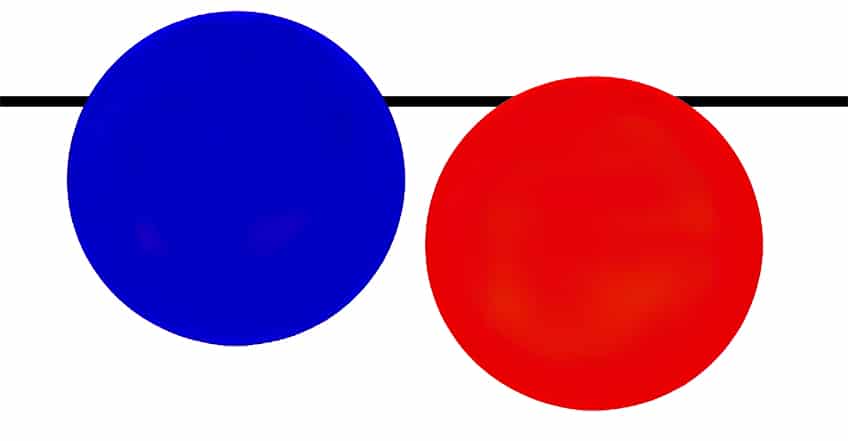
Space in art is like the air around a sculpture or the distance between objects in a painting. It’s what gives artwork depth and makes it feel real. Imagine looking at a picture of a house.
The space inside the house, between the furniture and walls, is called positive space. But the space around the house, the empty sky or grass, is called negative space.
Think about how a painter might use space. They might paint a tree in the foreground, a mountain in the middle ground, and a sky in the background.
By making the tree bigger and closer, it looks like it’s in front of the mountain and the sky, creating a sense of depth.
Space is super important in art because it helps us understand where things are in relation to each other. It can make a painting look realistic or give it a cool abstract vibe.
So next time you look at a piece of art, pay attention to the space around it—it’s doing a lot of the heavy lifting!
The Effect Of Space In Art
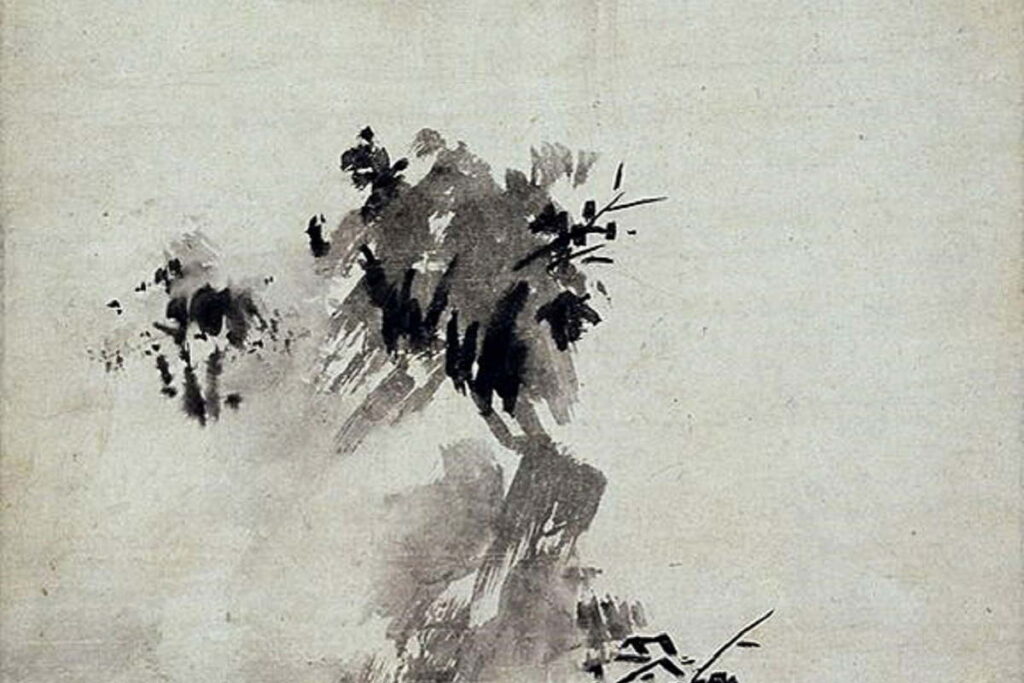
Space in art plays a crucial role in directing our attention and evoking emotions. Artists skillfully manipulate space to guide our eyes and create different feelings within us.
Firstly, space helps artists highlight specific subjects and establish focal points in their artwork. By controlling the arrangement of elements, artists can draw our gaze towards particular areas, giving them more significance.
Moreover, space isn’t just about what’s present; it’s also about what’s absent. Artists use negative space—the areas around and between objects—to shape our perception.
For instance, a painting with tightly clustered objects can make us feel uneasy, yet it also brings those elements together, creating a sense of unity.
On the other hand, objects spaced more evenly can provide a feeling of balance and stability.
Why Do Artists Need Space in Art?

Artists need space in art because it’s like the air around everything else they create.
Imagine if everything in a painting or sculpture were crammed together with no room to breathe—it would feel chaotic and overwhelming. Space helps give art balance and harmony, making it easier for us to understand and appreciate.
Space can also affect how we feel when we look at art. If an artist uses lots of open space, it might make us feel relaxed and peaceful. But if they use tight, cramped space, it could make us feel anxious or trapped.
So, space in art isn’t just about empty areas—it’s a crucial element that helps bring the whole artwork to life, shaping how we see and experience it.
How To Use Space In Art?
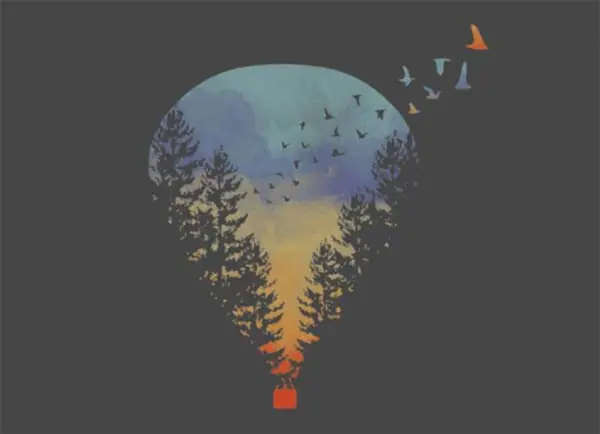
Using space in art involves several techniques that artists employ to craft compelling and expressive pieces.
One key method is to play with perspective, which involves creating a sense of depth within the artwork. This can be achieved by depicting objects or scenes in a way that suggests distance or dimension.
For instance, objects closer to the viewer might appear larger and more detailed, while those farther away might seem smaller and less defined.
Another approach is to establish different layers within the composition, such as foreground, middle ground, and background.
Artists achieve this by arranging elements in the artwork strategically, considering their size, placement, and overlapping.
By doing so, they create a sense of spatial hierarchy and depth, guiding the viewer’s eye through the composition.
Types of Space in Art

There are several types of space in art to be aware of, or that you may have heard of before. All of these can be applied with various techniques to create different pictorial effects in artworks.
For example, perspective and depth, with the assistance of other art elements like color, value, or texture, can create a three-dimensional space on a canvas.
Furthermore, space in art can also evoke emotional responses and create certain moods due to the manner it is utilized.
These effects will inform and direct how we interact with and interpret the overall artwork or structure, in other words, how we interact with the space physically, emotionally, and mentally.
Let us look below.
Positive and Negative Space
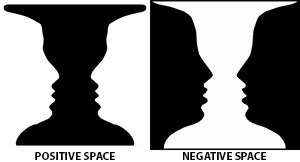
In art, there are different types of space that artists use to create meaning and impact in their work. One important concept is the interplay between positive and negative space.
Positive space is the area in an artwork that’s occupied by the main subject or objects. It’s the active part of the composition that grabs our attention. For instance, if you draw an apple on a white paper, the apple itself represents the positive space.
On the other hand, negative space is the empty or unused space around and between the main subjects. It’s the passive part of the composition. In the apple example, the white space surrounding the apple is the negative space.
Negative space isn’t just empty, though. It can play a significant role in enhancing the artwork. Artists can use negative space to highlight the positive space, creating balance and depth in the composition. They can manipulate it with colors, textures, or other elements to make the artwork more compelling.
Sometimes, negative space can be tricky to identify.
In certain artworks, the space between objects or figures may seem empty at first glance, but upon closer inspection, it may form shapes or figures itself.
This illusion blurs the line between positive and negative space, making what initially appears empty suddenly feel active and meaningful.
Overall, understanding how artists use positive and negative space helps us appreciate the complexity of visual compositions and how every part contributes to the overall message and impact of the artwork.
Deep and Shallow Space
Deep and shallow space are two types of spatial representation in art that depict different degrees of depth on a flat surface like a canvas.
Deep space, also known as three-dimensional space, gives the illusion of depth by showing objects at varying distances from the viewer.
This creates a sense of depth with elements in the foreground, middle ground, and background. Artists achieve this through techniques like linear perspective and atmospheric perspective, making distant objects appear smaller and less detailed.
On the other hand, shallow space, or two-dimensional space, portrays objects as if they’re closer to the viewer and lacking depth.
In shallow space compositions, objects tend to be more flattened, with minimal distinction between foreground and background. Artists often use techniques like overlapping and foreshortening to create this effect.
3D VS. 2D Space
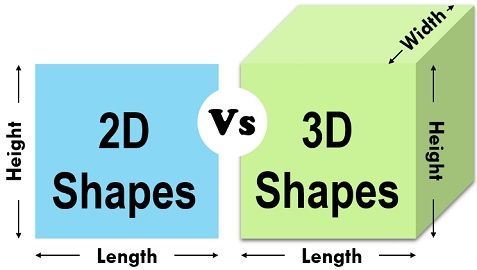
When comparing 3D space and 2D space in art, it’s like comparing a world with depth to a flat surface.
Three-dimensional space in art gives the illusion of depth, making objects appear as if they exist in a realistic environment on a flat surface. Techniques like perspective, shading, and overlapping create this effect.
For example, in “The Milkmaid” painting, you can see depth in the background wall, the table overlapping the maid, and realistic shading adding to the lifelike appearance.
On the other hand, two-dimensional space is about working on a flat surface without trying to create depth. Artists use shapes, colors, and forms to convey their message without the illusion of depth.
This is often called shallow space and is used in abstract art, like Hilma af Klint’s work. Her abstract compositions focus on the two-dimensional plane, exploring ideas beyond realistic depictions and perspective.
So, while 3D space aims for realism using techniques to create depth, 2D space focuses on the flat surface, using shapes and colors to convey meaning without the need for depth or volume.
7 Principles of Art

Form is one of the elements of art, not principles of art. You can learn about each principle of art and element of art in the linked articles below:
- Balance
- Contrast and Emphasis
- Movement and Rhythm
- Unity and Variety
- Harmony
- Pattern
- Proportions and Scale
7 Elements of Art
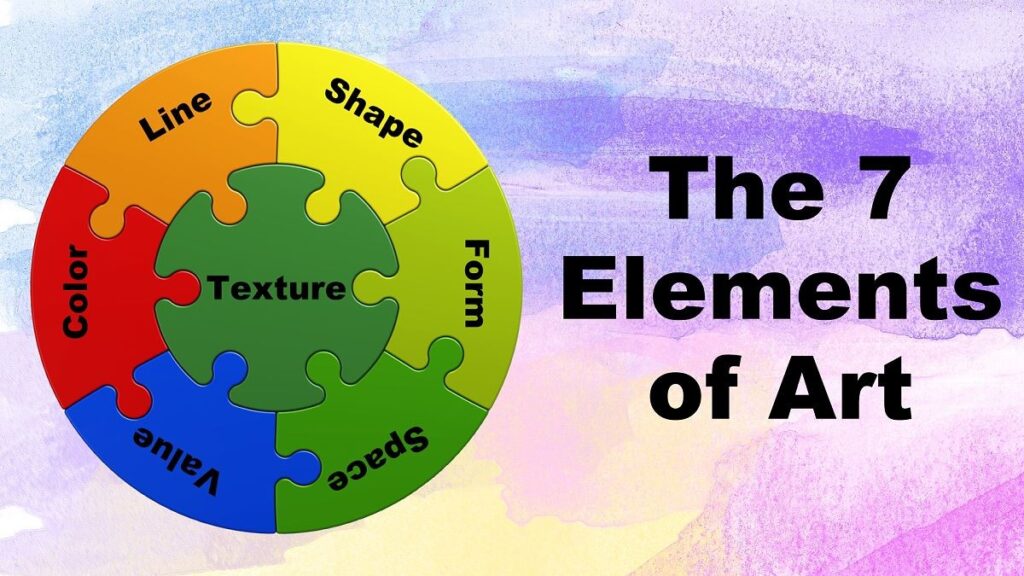
How to Create the Illusion of Space in Art?
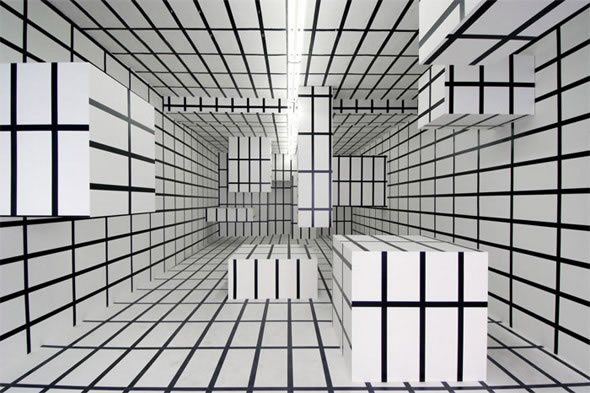
To create the illusion of space in art, artists use various techniques that trick the eye into perceiving depth on a flat surface.
Here’s how they do it:
- Perspective: By distorting object shapes, artists mimic the way objects appear smaller as they recede into the distance. This tricks our brain into seeing depth. For example, in Andrea Mantegna’s “The Lamentation of Christ,” Christ’s body is distorted to convey depth on a flat canvas.
- Overlapping: When one object partially covers another, it appears closer to the viewer. M.C. Escher often employed this technique in his intricate drawings of buildings and staircases.
- Size or Scale: Objects appear smaller as they move away from us. Artists manipulate size to suggest depth. In “The Ideal City,” buildings in the distance are smaller than those in the foreground, creating a sense of depth.
- Placement: Objects placed higher on the canvas seem farther away. Gustave Caillebotte’s “Paris Street; Rainy Day” demonstrates this, with distant buildings positioned higher than foreground figures.
- Color and Value: By adjusting color and contrast, artists simulate atmospheric effects. Cooler, lighter colors recede into the distance, while warmer, darker colors appear closer. Edward Hopper expertly used color to create depth in his realistic paintings.
- Detail: Objects in the foreground have more detail, while those in the background are less detailed. Vincent van Gogh’s “The Red Vineyard at Arles” exemplifies this, with detailed figures in the front and simpler ones in the distance.
By combining these techniques, artists create convincing illusions of space, drawing viewers into their imaginary worlds.
FAQ’s:
What Does Space Mean For Art?
For art, space means the area inside and outside of the shapes and forms of a piece of visual art. Space means any part of an artwork that has height, width, and sometimes depth. Space may also refer to empty space or void parts in a picture.
Why is Space an Important Element of Art?
Space is an important element of art because it defines the area taken up by an object, or the area surrounding the object, including the foreground and the background of the object in a picture.
Without the element of space in art, there would be no way to discuss the height, width, or depth of objects, and no way to understand physical or illusory areas in an art piece.
What Is Positive and Negative Space in Visual Art?
Positive space in art is the subject matter of a visual composition. It is the so-called active occupied space, whereas the negative space is the so-called passive space, which is the area around the main subject matter.
The negative space is also as important as the positive space because it can create emphasis and set a specific mood. Both types of spaces can also interact with one another.
Conclusion
In summary, space in art is not just about the physical distance between objects; it’s a dynamic element that artists manipulate to engage viewers, evoke emotions, and guide interpretation.
Whether it’s the interplay between positive and negative space, the creation of depth through techniques like perspective and overlapping, or the illusion of space through color and detail, artists use space as a versatile tool to bring their creations to life.
By understanding the various types of space and how they contribute to visual compositions, viewers can deepen their appreciation for the complexity and impact of art.
So, next time you encounter a piece of artwork, take a moment to consider the space within it—it’s more than just empty areas; it’s the breath that gives art its vitality and meaning.


Leave a Reply